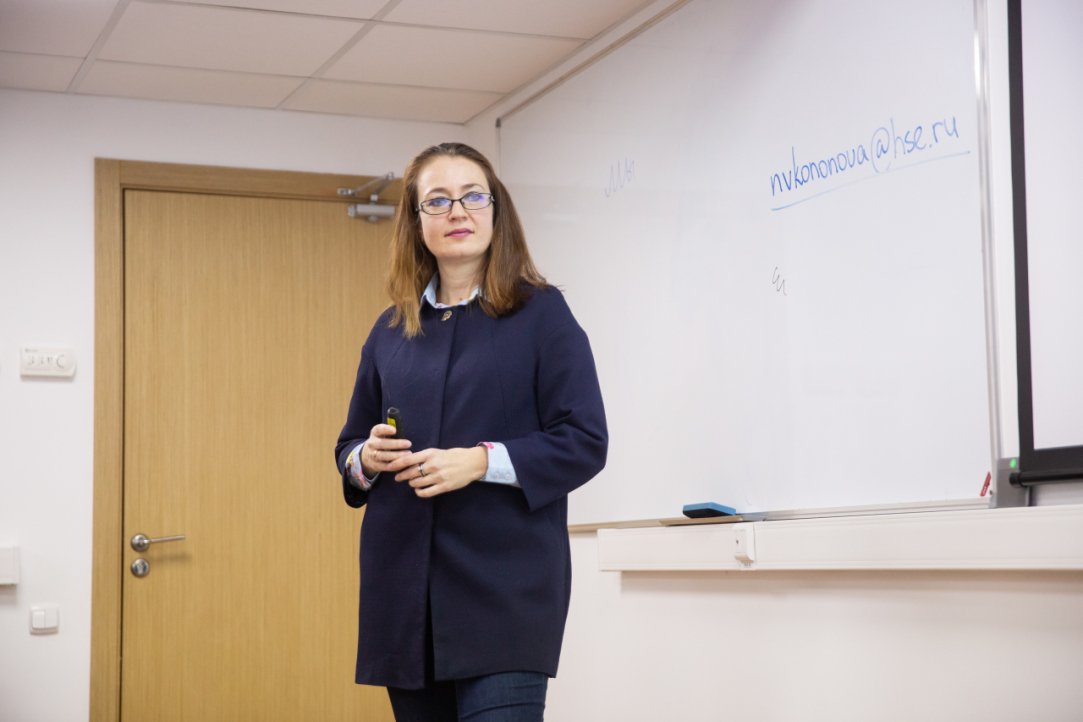Student Tutor Gives Talk at ICEF on Cryptocurrencies and NFTs

Cryptocurrencies have fallen to two-year low after FTX exchange filed for bankruptcy in November 2022, sending shock waves through the crypto world and agitating investors to revise their strategies and predictions as to what will happen on the digital investment market. In her talk called Cryptocurrencies and NFT, Victoria Dobrynskaya explained the volatility of crypto markets and expanded on the phenomenon of NFT as a digital asset.
Crypto is a hot topic nowadays. Vigorous attempts to explore the digital investing trends and provide forecasting models are pursued also by the academics – even though any fundamental study into this phenomenon is complicated by the lack of legal regulation of the crypto market and constraints on trading in certain cryptocurrencies. Still, the cryptocurrency research continues, led among others by Associate Professor Victoria Dobrynskaya of HSE Faculty of Economic Sciences, who also teaches at ICEF. In her recent talk at a dedicated seminar, Victoria presented a compilation of the currently published cryptocurrency studies. She kept the students heatedly discussing and presented her own papers.
As known, cryptocurrencies have gained widespread acceptance in the financial industry as instruments with vast investment opportunities. Cryptocurrencies are traded on multiple exchanges, one being Binance, and can be stored in special crypto wallet apps.
As of today, there are approximately 21,730 cryptocurrencies traded on 525 exchanges worldwide. The total market cap of all cryptocurrencies is $840 billion, with Bitcoin still remaining the leading indicator for stock indexes.
Despite the recent market stumble, cryptocurrencies remain the most popular choice as an alternative investment, generating incredibly large returns that hit as high as 20,000% per week until 2022. But, the risk of downside should never be neglected: in 2018 all cryptocurrencies were down 90%, followed by another crash in 2020 during the pandemic.
In 2022, the crypto world has been hit several times already. With the collapse and bankruptcy of FTX exchange in November 2022, skepticism is high among crypto investors, increasing the academic research in the light of the new data for more precise calculation of risks and profit margins.
In her talk, Victoria presented a number of fundamental studies that discuss empirical pricing models for cryptocurrencies. One fundamental study is titled Risks and Returns of Cryptocurrency (by Yukun Liu & Aleh Tsyvinski) and explores the risk-return tradeoff of cryptocurrencies in relation to other markets. Victoria further presented her own papers where she explores the downside risk of cryptocurrencies and the momentum (and reversal) returns on crypto markets.
Another phenomenon discussed was NFT (Non-Fungible Token) as a new alternative investment. NFT is a digital asset such as a piece of art, photograph, video, music or other digital content whose ownership has been authenticated and stored as a unique crypto copy. Being non-interchangeable digital assets, NFTs represent an alternative, independent system for trading in collectible goods.
NFTs first started selling in 2013. In March 2021, an NFT by artist Beeple fetched a record $69.3 billion at Christie’s auction – the largest transaction in the history of NFT art market. Since then, crypto copies of the famous pieces of art have been created by many museums, stimulating an influx of crypto investors. Opensea.io, which is currently the largest NFT marketplace, offers about two million digital collages.
The first study to evaluate the NFT market index was The Economics of Non-Fungible Tokens (by Nicola Borri, Yukun Liu & Aleh Tsyvinski), published in March 2022. One of its findings describes the NFT market as surpassing the returns of cryptocurrency markets and enjoying an average yield of about 130% per annum. Victoria compared the performance of the NFT market with that of the cryptocurrency market based on more parameters, including impact on the sector of conventional investments. Her analysis establishes that NTFs owe their artificially created worth to extreme uniqueness, not artistic value of a piece of art. Evidence to this is presented the study Buying Beauty? On Rarity and Returns in Non-Fungible Tokens that Victoria produced in cooperation with Daniele Bianchi of Queen Mary University of London.
Victoria’s talk was followed by a lively discussion. The students were discussing, among other issues, reasons why the cryptocurrencies are lacking in fundamental value and models for calculating it; how the traditional financial industry can intervene for better crypto asset market regulation; how RF residents can achieve legitimate inclusion in crypto trading; and positive consequences of the collapse of FTX as a ‘centralized’ exchange for decentralized institutions. Whether the Russian regulators and businesses would become more loyal towards cryptocurrencies constituted a topic of its own. While discussing, the students of ICEF students demonstrated their excellent awareness of the cryptocurrencies and latest happenings in the crypo world. The discussion turned out to be productive, involving Victoria as a tutor and facilitated largely by the students themselves – illustrating once again the relevance of the issues raised during the talk.